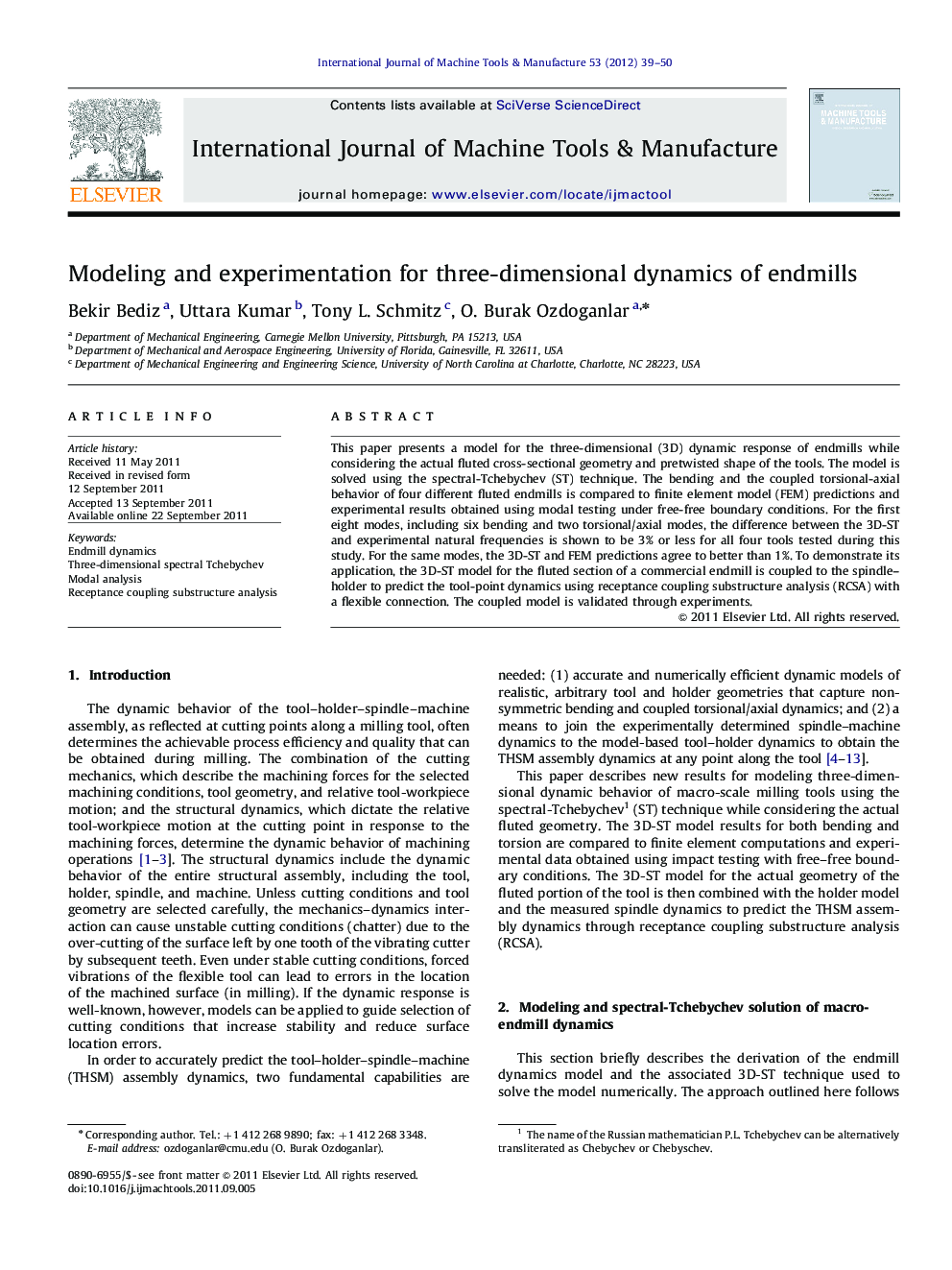| Article ID | Journal | Published Year | Pages | File Type |
|---|---|---|---|---|
| 781860 | International Journal of Machine Tools and Manufacture | 2012 | 12 Pages |
This paper presents a model for the three-dimensional (3D) dynamic response of endmills while considering the actual fluted cross-sectional geometry and pretwisted shape of the tools. The model is solved using the spectral-Tchebychev (ST) technique. The bending and the coupled torsional-axial behavior of four different fluted endmills is compared to finite element model (FEM) predictions and experimental results obtained using modal testing under free-free boundary conditions. For the first eight modes, including six bending and two torsional/axial modes, the difference between the 3D-ST and experimental natural frequencies is shown to be 3% or less for all four tools tested during this study. For the same modes, the 3D-ST and FEM predictions agree to better than 1%. To demonstrate its application, the 3D-ST model for the fluted section of a commercial endmill is coupled to the spindle–holder to predict the tool-point dynamics using receptance coupling substructure analysis (RCSA) with a flexible connection. The coupled model is validated through experiments.
► Models for 3D dynamics of endmills, with actual cross-sectional geometry and twist are presented. ► Spectral-Tchebychev technique is used for deriving the tool models. ► Extended receptance coupling substructure analysis technique is integrated. ► Predicted tool tip response is validated with experiments.
